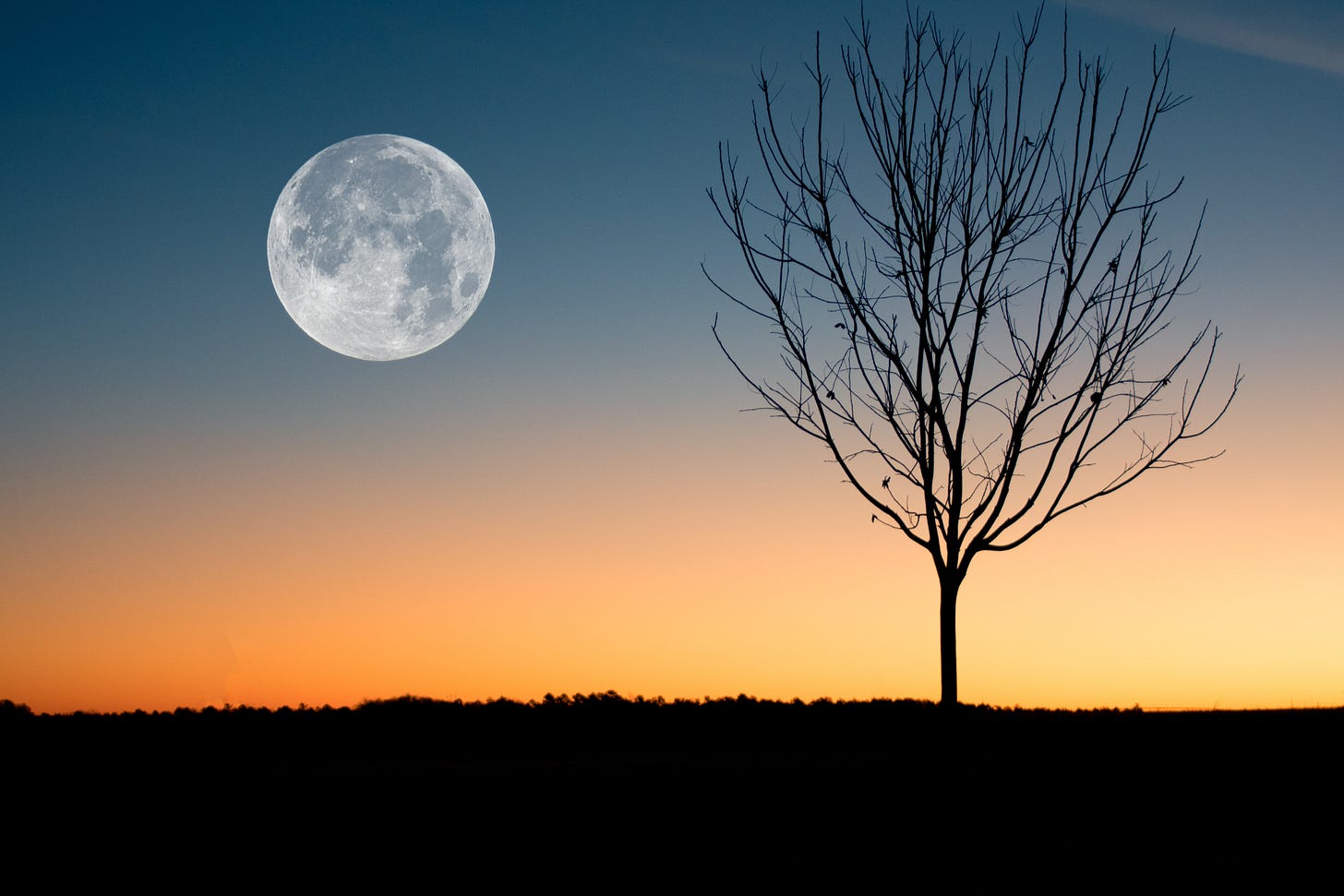The group of us crossed a small wooden bridge over the creek, walking as softly as possible not to disturb the wildlife that might be out in the night. Our guide whispered to look to the right and pointed toward the water. “There,” he said, “in the ripples.”
We all stopped and turned.
“He’s near the bank now, crawling up,” the guide said quietly.
Some saw it. Others did not.
I pointed and said to my wife, “A beaver?”
“It’s likely a beaver,” the guide said. “Too bad the moon was not with us. His coat would have shimmered in the light.”
My wife and I had joined a small group to walk the arboretum near our home on the night of the last full moon of winter. On the drive over the Moon hung big in the eastern sky. It could not be missed. But by the time our hike began, clouds had obscured it. During nearly two hours of walking through oak, maple, and pine forest, prairie, and lake terrain the Moon never appeared.
Yet, we knew it was there. We could almost touch it.
The human eye adjusts in amazing ways to light or the lack of it. Even without the Moon, the only time we needed our flashlights was along the hidden trail in dense spruce. We could see our way without worry. Imagine, I thought as we hiked, if the Moon had been fully visible. The light would have been like that of a late afternoon. And I knew, just behind those clouds, the Moon was with us. At one point, walking through open prairie, I believed I could reach out and put my hand on it. Breach the clouds and grab it.
The Moon for all humankind has forever been a ghostly presence. Its gentle gravitational pull partially controls the rhythm of tides, and the beats of our hearts. Its soft light shines on the nocturnal nuptials of many animals. And civilizations have calculated their days by its comings and goings. Amazingly, some studies suggest the Moon’s orbit around Earth has played a role in weather systems that might have contributed to bringing life to our planet. And all of this comes whether we are able to see it slipping in and out of the clouds or not.
Who do you know that doesn’t have some affinity for the Moon? Poets have coveted it. Farmers have relied on it. Photographers have captured it. Musicians have sung about it. Astronomers have been fascinated by it. Halloween goblins have thrived on it. If you’ve ever had a home telescope, you undoubtedly have spent much of your time focusing in on the Moon. One Christmas when I was a kid, my parents gave me a simple telescope on a small tripod, likely purchased from Kmart. It was white with black trim, and chrome feet. At night on our big side porch, I would point it toward the sky and search for the Moon. I studied picture books about the phases and what to look for on its surface—the shades of gray, the craters—the one called Copernicus—and of course, the Man in the Moon, looking back at me. Faraway places, the unknown, the places explorers go captivated me. When Neil Armstrong stepped on its surface, the Moon didn’t appear quite as mysterious as it had, still, I continued to search for it with my telescope on summer nights. In time, I found the secrets of deep oceans just as intriguing and studied the oceanographers who worked to unravel their mysteries. As a young man, I even traveled to Woods Hole and the Oceanographic Institution in Massachusetts. But I never lost my fascination for the Moon. It remains a beacon to the magical unknown, a symbol of possibilities. So close, yet a paradox. Our steppingstone to the distant, as National Geographic once labeled it. How different would the world be if the Moon were not there?
On the drive home that night, my wife and I searched the sky. But seeing the Moon again was not to be, and with that came a hint of sadness, as if we had made plans to meet a friend and he had failed to show up. Yes, it was too bad. But still we knew the Moon was there, our closest heavenly companion, watching over us.
Photo: David Besh



A lovely, tender piece, David. You captured well the magic of the moon, the magic we all love.